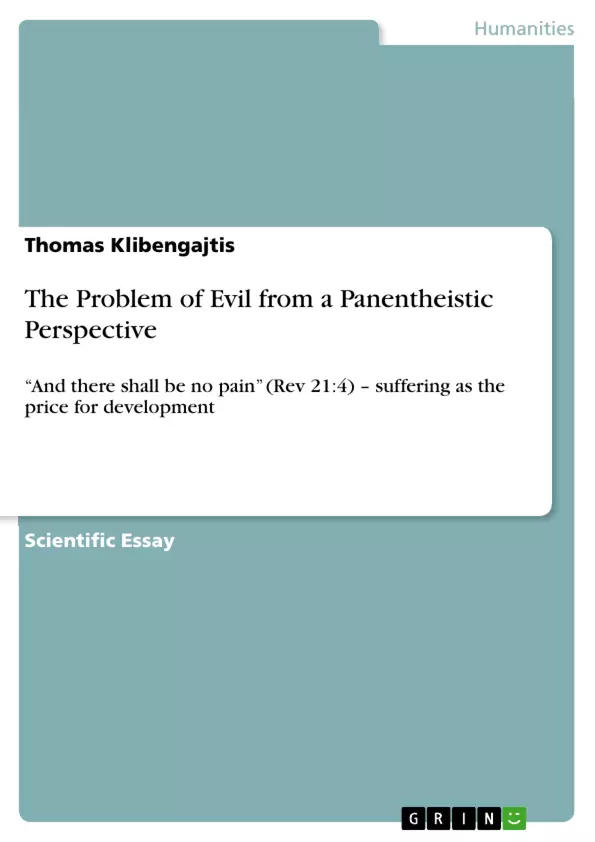The paper aims to provide a panentheistic perspective on the problem of evil and suffering. First the connection between the notion of God and good and evil is established. Further a definition of evil as “something, which causes suffering” together with its implications is given. Subsequently the notion of moral evil and physical evil is provided, followed by the three classical views on evil, which are: (1) there is no evil; (2) God is responsible for evil; (3) humans are responsible for evil. Finally the panentheistic view on God is introduced, who is considered as a system (sys0) consisting of numerous dynamic subsystems (sys1-n). Consequently God is both impassible, being as sys0 in equilibrium, and empathic with all dynamic subsystems (sys1-n), where, due to His immanence, He is present. The concluding part shows the meaning of suffering in Christian doctrine of Redemption and Co-Redemption.
Inhaltsverzeichnis (Table of Contents)
- Introduction
- God and the notion of good and evil
- The notion of moral evil (me)
- The notion of physical evil (phe)
Zielsetzung und Themenschwerpunkte (Objectives and Key Themes)
This essay aims to explore the problem of evil from a panentheistic perspective, challenging traditional theistic and atheistic views. It proposes a new understanding of evil as the price for development, arguing that suffering, while inherently negative, is ultimately necessary for growth and evolution in both individuals and the universe.
- The Problem of Evil
- Panentheism and the Nature of God
- The Notion of Good and Evil
- Moral and Physical Evil
- Suffering as a Catalyst for Development
Zusammenfassung der Kapitel (Chapter Summaries)
The introduction delves into the historical approaches to the problem of evil, outlining three common perspectives: the denial of evil, God's responsibility for evil, and human responsibility for evil. It then introduces the panentheistic view, which frames evil as an inherent component of the developmental process.
The second chapter examines the concept of good and evil, contrasting absolutist and conventionalist approaches. It argues that both perspectives fall short in explaining the nature of suffering. It proposes a more comprehensive definition of evil as "something that causes suffering," acknowledging the inherent subjectivity of this experience.
The third chapter focuses on moral evil, emphasizing the role of intentional and voluntary actions in causing suffering. It considers the nuances of moral responsibility and how it relates to the concept of evil.
The final chapter under consideration explores physical evil, encompassing suffering caused by natural forces, chance, or organic development. It argues that physical evil, as a necessary part of the evolutionary process, contributes to the overall equilibrium of systems.
Schlüsselwörter (Keywords)
Key terms and concepts explored in this essay include: panentheism, the problem of evil, moral evil, physical evil, suffering, development, equilibrium, moral responsibility, natural law, and the notion of good and evil.
- Quote paper
- Dr. phil. Mag. theol. Thomas Klibengajtis (Author), 2010, The Problem of Evil from a Panentheistic Perspective , Munich, GRIN Verlag, https://www.grin.com/document/191337



